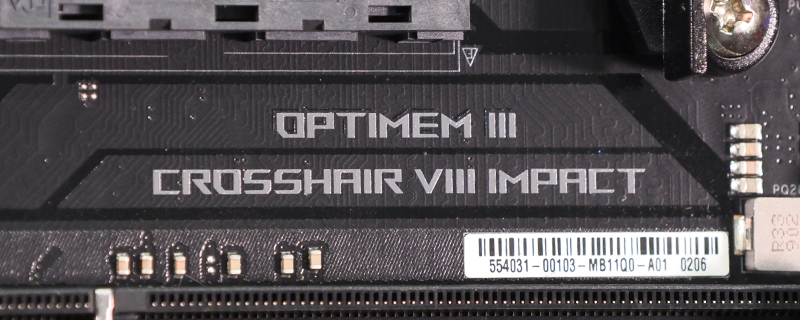ASUS ROG Crosshair VIII Impact Review
Conclusion
We could leap into our conclusion in our usual style, discussing what makes this particular model worthy of your attention or what has stuck with us throughout our time with it, but there is an elephant in the room and we need to discuss it before we can move on. The price. £359.99. We try and avoid discussion about price at the start as desirability isn’t price related. It’s tough not to here though.
If you haven’t realigned your thoughts about the X570 pricing structure that might come as something of a shock. There are two things that lead this single PCI Express slot motherboard to cost as much as it does. Firstly the PCI Express 4.0 hardware itself is not cheap. All of the X570 motherboards have seen a price hike over the older AM4 and even AM3 setups and the Impact is no exception. Remember the X570 chipset is like a X299 chipset on steroids and those are hardly affordable for the majority. Secondly this is a ROG motherboard, and the component selection that allows it to obtain that branding alone is enough to make it more expensive than vanilla models. We still think the pricing is a bit steep when you look at the relative pricing of other gaming X570 motherboards, but in the majority of the ASUS ROG range it’s where you’d expect, even if the Strix-E is £50 cheaper.
However, you might absolutely have to have a motherboard of a certain form factor and don’t wish to compromise your setup or potential performance in the quest for svelte sizing. If that sounds like you then the Crosshair VIII Impact does incredibly well for its size. Previous experience of the X570 chipset and the demands of the Ryzen 9 3900X have shown that it will take all the performance you can give it and then some, and so the small footprint of the Impact brings engineering challenges that we feel have been met admirably by the ROG design team. We squeezed just under 4.4 GHz from our Ryzen 9 3900X and if we tuned the Impact for speedy DDR4 rather than CPU performance it handily managed 4600 MHz. Naturally your needs will probably fall somewhere in between these two extremes but it’s nice to know that you’re not giving up any overclocking ability just because you have a smaller footprint.
We also note that this is the first motherboard we’ve tested that has had the benefit of some behind the scenes updates either in Windows or drivers that enables the stock speed, single thread performance to be dramatically increased. It certainly does as our CineBench R20 and R15 results demonstrate. This will be coming – has come by now – to all X570 offerings so it isn’t something we’ll be singling the Crosshair VIII Impact out for, but it’s nice to know that AMD aren’t resting on their considerable laurels, or even their hardys.
Whilst the smaller form factor always limits aesthetic considerations we think the Impact is fine enough. It’s never going to have the all-over covering we’ve seen on some of the Formula boards, or the huge IO section heatsink lighting displays that are the hallmark of others. It’s a motherboard dedicated to performance and feature set first and foremost. Probably second and third too. At least modern motherboards monochrome colouring mean that even here it looks good with black plastics everywhere, whereas older small footprint motherboards looked like an explosion in a Skittles factory.
With good performance, more features than you might expect from such a small footprint and excellent overclocking abilities the ROG Crosshair VIII Impact is just the ticket if you have an ITX sized case but want a little more than an ITX motherboard can provide.
Discuss the ASUS ROG Crosshair VIII Impact in our OC3D Forums.




